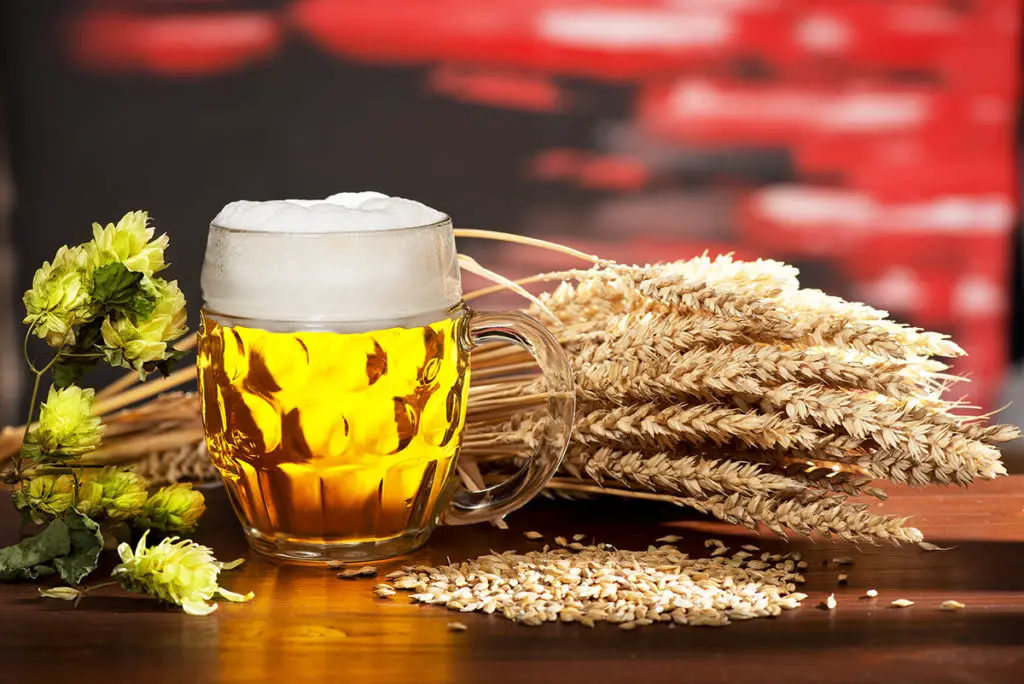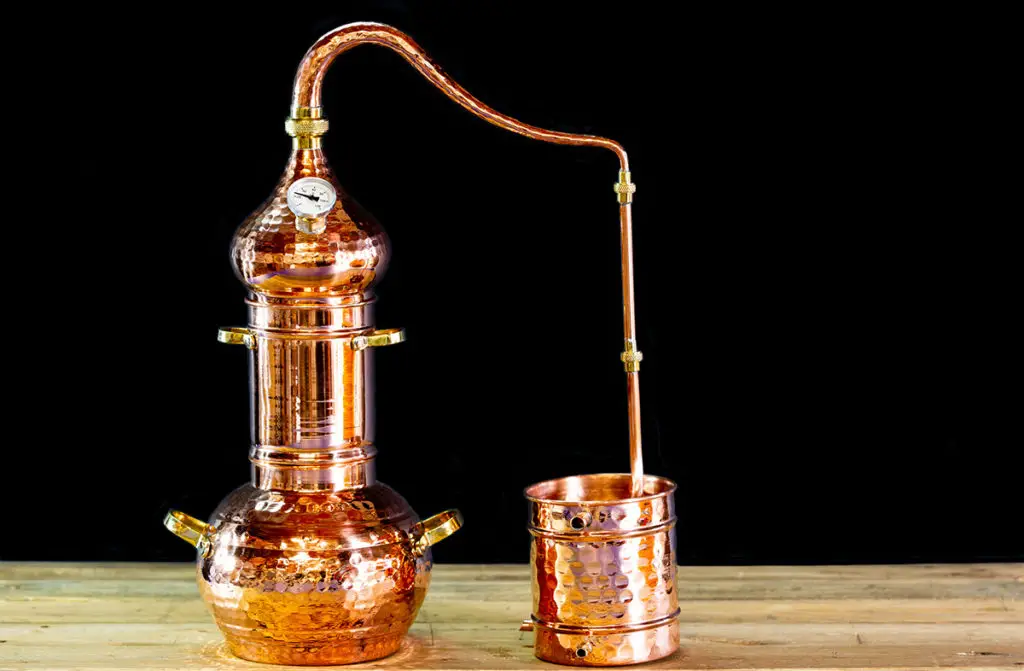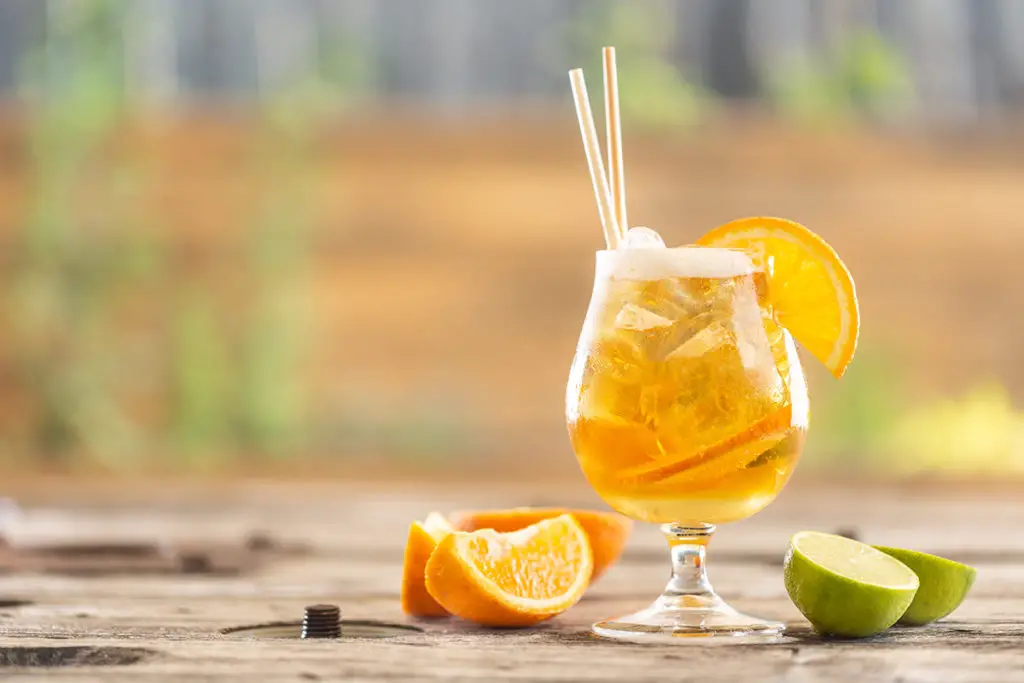Non-alcoholic beer has become popular in recent years because everyone wants to live a healthier, cleaner, and leaner lifestyle. Consuming non-alcoholic beer is one of the ways of achieving this goal. The alcohol-free beers available in stores are okay, but here’s how you can brew a great non-alcoholic beer at home.
Here’s how to brew non-alcoholic beer at home:
- Gather your beer making tools.
- Brew your beer normally.
- Remove the alcohol.
- Carbonate the beer.
Whether you are starting to make beer or have been brewing in the past, this simple guide will be helpful. The process is simple, and you will not require any complex equipment in addition to the normal homebrewing gear. Let’s get started, so you can start enjoying your non-alcoholic beer.
1. Gather Your Beer Making Tools & Ingredients
If you are brewing for the first time, you need to start by purchasing a home brewing kit.
There are numerous No products found. (Amazon) sold online right now, which come with various ingredients to deliver the results you are looking for. The kits also have crucial instructions to guide you in the brewing process.
Apart from the home brewing kit, you are going to need the following to make alcohol free beer:
- Brewing kettle
- Grain
- Stainless steel pot
- Yeast
- A good source of heat
The brewing process takes time, so you need a lot of patience when getting started. When you finally drink your first homemade beer, the patience will be worth it.

BEER DROP: Boxes of beer from Award-winning microbreweries → Join The Club
2. Brew Your Beer Normally
When making all types of beer, the brewing process remains the same. If you are brewing for the first time, try learning the process by making the normal alcoholic beer because it is easier. Alcohol-free beer has more steps, and most newbies might be overwhelmed by everything.
The recipe you choose is what makes the difference in the outcome.
Go for a beer recipe requiring complex sugars that won’t be fermented by yeast and later turned to alcohol. Using complex sugars will also assist in ensuring that your beer has a body.
It is paramount to avoid any recipes that need cornstarch as it produces several simple sugars that ferment easily and convert into alcohol. Remember that sugar is the main ingredient that increases alcohol content in beer.
When brewing, try to work with a special yeast that limits the process of fermentation.
Some yeast strains are known for producing very little alcohol in the beer. However, these yeast strains might make your beer have a sweet taste because of the increased sugars that will be needed in the fermentation stage, so always choose your brewing yeast carefully.
When the fermentation process of the beer is over, you can now start the dealcoholization.
3. Removing the Alcohol From Beer
Many people get rid of alcohol from their beer by simply boiling off the alcohol. Others prefer using the filtration methods such as reverse osmosis. There are numerous techniques to use for this process, and you only have to select what works for you.
Let’s now look at the methods, so you can choose your favorite method.
The Boiling off Method Will Eliminate Alcohol From Beer
Most people making non-alcoholic beer use the boil-off method to remove alcohol from their beverage. Many brewers learn about this process from their chemistry classes. Alcohol is believed to have a lower boiling point compared to water.
With this method, the beer will be heated to 173°F (78.33°C), which allows the alcohol to burn and evaporate from the beer.
The boiling off method is common among homebrewers because of various reasons. First, the process is easy, and it is straightforward enough for most brewers to do it perfectly. The process does not require too much equipment either.
The major downside of utilizing the boil-off method is the fact that the beer might turn out to have a bland taste, and will not have the complex flavor most people love. However, if the brewer takes the right precautions and is patient during the boiling-off method, they can end up with amazing alcohol-free beer.
Heating the Beer
When using the boiling-off process, you start by transferring your fully fermented beer to the brew kettle or stockpot. After this, select how you are going to heat the beer.
There are two ways to heat:
- Stovetop heating: Place the beer on the stove and observe the thermometer. Always ensure that the temperature remains at 175°F (79.44°C). If the temperature goes higher, you will have strange flavors in the beer.
- Oven heating: Place the brew kettle or stockpot inside your oven and wait for 20 to 30 minutes. The oven temperature should be 180°F (82.22°C). For the best outcome, your oven should be preheated before you start heating the beer.
Some brewers prefer to use stovetop heating because it provides a lot of conveniences. The kettles used in making beer are always huge, and you can easily change the temperatures when the kettle is on the stove.
Other individuals might opt to go with the oven heating technique too.
The oven heats the beer in an even way, helping it maintain its unique taste and flavor. The yeast used in the beer is altered by heat, which means that fluctuating temperatures will impact your beer.
The oven heating idea is perfect for individuals who want to be brewing small amounts of beer because some of the kettles might not fit in the oven.
Whatever heating method you select, observe the beer so that you can get amazing results.
When you have finished the heating process, take a spoonful of beer, cool it, and taste. This is the only way to determine whether there is alcohol in your beer. Remember that the hot and uncarbonated beer does not taste good.
When you have used the spoon, ensure you do not use it on the beer anymore.
Your lips might contaminate the spoon with bacteria, which will alter the beer’s final taste. All the equipment you are using for the brewing and heating process should always be sanitized.
Removing Alcohol From Beer Using Reverse Osmosis
The reserve osmosis process is also known as the filtration method.
With this method, you will filter the beer through a membrane that is used to separate water and alcohol from the rest of the ferment. After this process, the alcohol is distilled out, and the water removed from the filtration process can be returned to the fermentation mixture.
The filtration method is known to be quite costly, and it will need numerous pieces of equipment to be successful. If you are brewing your alcohol-free beer at home, it won’t be easy to use this process.
Use Vacuum Distillation to Remove Alcohol From Beer
This technique has several similarities with the boil-off method. The only difference in vacuum distillation is that the beer will be inside a vessel so that the vacuum can be applied.
The alcohol boiling point is reduced to 120°F (48.88°C).
For home brewers, this method is not always available, but those who use this technique end up getting very good results.

4. Carbonate the Beer
If you have tested alcohol-free beer in the past, you might have noticed that it is flat. This happens mostly when you have used the boil-off method because it gets rid of some flavors. After boiling, the carbon dioxide in the beer is released, leaving the brewer with a non-carbonated drink.
If you want to carbonate the alcohol-free beer you have just made, you can use forced carbonation or natural technique.
With natural carbonation, you need to add some more yeast. The yeast you are using must be activated before bottling, but if you use the unactivated yeast, carbonating will take a longer time. More priming sugar is also required before you bottle the beer, so if you don’t want that much sugar, you might want to re-think your process.
The best yeast to use in the carbonation process is the one that is already undergoing active fermentation.
If you are not comfortable using yeast, you can purchase the carbonation tablets for your alcohol-free beer. You only need to insert the tablets in the beer before bottling, and the beer will be ready to serve in just three days.
With forced carbonization, you can inject carbon dioxide into the beer. As you continue brewing, you will select the carbonizing process that works perfectly for you.
How Non-Alcoholic Beer Is Made
When making alcohol-free beer, you can either restrict alcohol from forming during the fermentation process or remove alcohol from the beer.
You can restrict alcohol formation by using certain yeast or interrupting the process of fermentation. Getting rid of the alcohol after the beer has fermented is the easiest process for home brewers.
For your beer to be considered alcohol-free, it should not have more than 0.5% alcohol in volume. Your results might not be 100% alcohol-free, but the levels need to be extremely low. You might be surprised to discover that you can easily convert regular beer into a non-alcoholic beverage.
The brewing procedure is not complicated as many people expect, but if you follow these steps, you’ll have great results in no time.

Summary
Although making non-alcoholic beer is easy, it is always time-consuming. The best thing about it is that you will not need some special items to make the beer taste great. If you want amazing results, you need to start the brewing process by getting the right recipe.
The recipe determines the outcome of your alcohol-free beer. While brewing, consider several factors like the type of yeast to use, brewing temperature, and sugar amounts. These factors determine the alcohol content in your beer.
